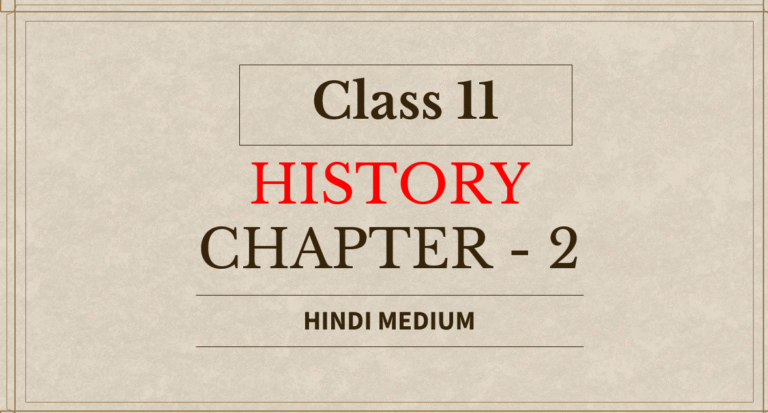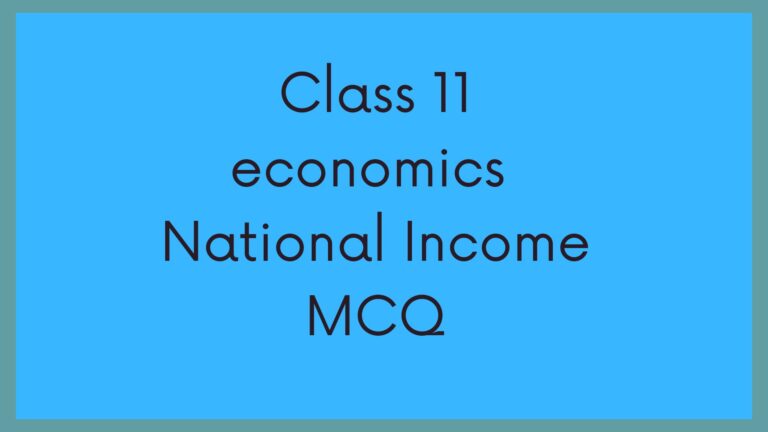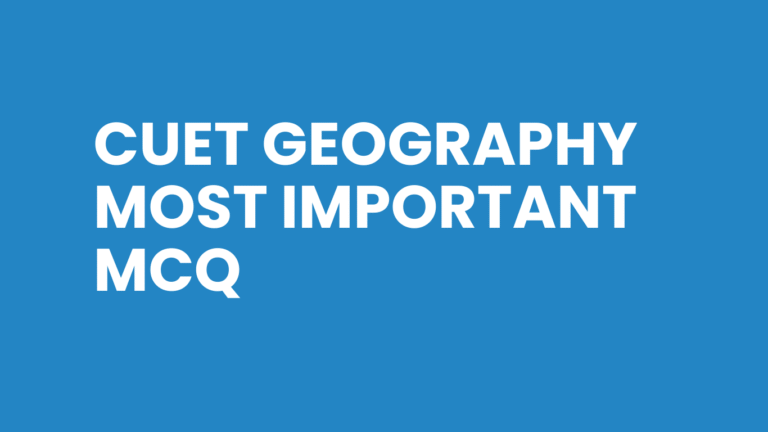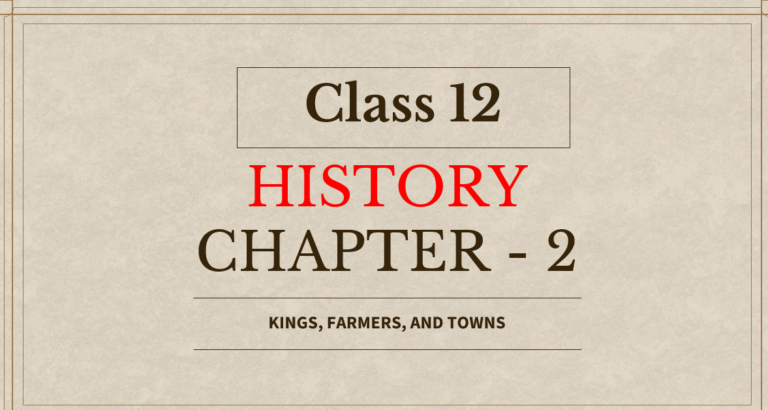NCET History Most Important MCQ | NCET 2026 History MCQ
This article is focused on providing you with top-class NCET 2026 History MCQs. NCET History Most Important MCQ can help you get the whole book concept in one place and assess your own capability. These MCQs are designed by me based on my class 12 and NCET 2025 experience. I have appeared in NCET and got very good marks. You can also use this and get the best from this. These MCQs are very helpful for those who are thinking of preparing for NCET 2026.
NCET 2026 History MCQs provided by us are the best among other platforms. We provide you with fully refined and accurate MCQs rather than just spamming them. You can also get the explanation on our YouTube channel. You can also take the history mock test on our website!

Top 50 best NCET History Most Important MCQ
- The Jallianwala Bagh massacre took place on:
a) April 13, 1919
b) March 12, 1918
c) August 15, 1919
d) May 10, 1920
Answer: a) April 13, 1919. — Troops under General Dyer fired on a peaceful gathering at Amritsar that day. - Who led the Champaran Satyagraha (1917)?
a) Subhas Chandra Bose
b) Mahatma Gandhi
c) Lala Lajpat Rai
d) Jawaharlal Nehru
Answer: b) Mahatma Gandhi. — Gandhi’s first major satyagraha in India was at Champaran (indigo tenants). - The Rowlatt Act was passed in which year?
a) 1918
b) 1919
c) 1920
d) 1921
Answer: b) 1919. — It extended wartime emergency measures into peacetime and sparked protests. - The Non-Cooperation Movement was formally launched by the Indian National Congress in:
a) 1919
b) 1920
c) 1922
d) 1930
Answer: b) 1920. — Launched after Gandhi’s call following the Khilafat and Rowlatt unrest. - Who presided over the Lucknow Pact negotiations (1916) for the Muslim League?
a) Muhammad Ali Jinnah
b) Nawab Salimullah
c) Wazir Ali
d) Aga Khan
Answer: b) Nawab Salimullah. — Lucknow Pact was between Congress and Muslim League; Salimullah represented provincial Muslim interests. - Which event is associated with the launching of the Civil Disobedience Movement?
a) The Dandi Salt March
b) The Chauri Chaura incident
c) The Bardoli Satyagraha
d) The Cripps Mission
Answer: a) The Dandi Salt March. — Gandhi’s Salt March to Dandi in 1930 marked the start. - The Poona Pact (1932) was an agreement between Gandhi and:
a) Dr. B.R. Ambedkar
b) Subhas Chandra Bose
c) Motilal Nehru
d) Sardar Patel
Answer: a) Dr. B.R. Ambedkar. — It concerned reserved seats for depressed classes in provincial legislatures. - Who was the president of the Indian National Congress when the resolution of Purna Swaraj (complete independence) was adopted in 1929?
a) C.R. Das
b) Motilal Nehru
c) Jawaharlal Nehru
d) Subhas Chandra Bose
Answer: c) Jawaharlal Nehru. — The Lahore Session (December 1929) under Nehru declared Purna Swaraj. - The Simon Commission was appointed by the British government in:
a) 1926
b) 1927
c) 1928
d) 1929
Answer: b) 1927. — It arrived in India in 1928 and sparked widespread protests. - Who organized the Home Rule League along with Bal Gangadhar Tilak?
a) Annie Besant
b) Lala Lajpat Rai
c) Subhas Chandra Bose
d) C. Rajagopalachari
Answer: a) Annie Besant. — Besant and Tilak both launched Home Rule campaigns (1916–18). - The Bardoli Satyagraha (1928) was led by:
a) Mahatma Gandhi
b) Vallabhbhai Patel
c) Jawaharlal Nehru
d) Sardar Azad
Answer: b) Vallabhbhai Patel. — A successful peasant agitation in Gujarat. - The Cripps Mission to India took place in:
a) 1940
b) 1941
c) 1942
d) 1944
Answer: c) 1942. — British mission offering postwar dominion status; rejected by Indian leaders. - Which of these was NOT part of Gandhi’s constructive programme?
a) Khadi promotion
b) Untouchability removal
c) Industrialization through heavy industries
d) Village sanitation
Answer: c) Industrialization through heavy industries. — Gandhi emphasized village self-reliance, not heavy industrialization. - The Quit India Movement was launched in:
a) 1939
b) 1940
c) 1942
d) 1945
Answer: c) 1942. — Launched by the Congress at the Bombay session demanding immediate British withdrawal. - Subhas Chandra Bose founded which armed force?
a) Indian National Army (INA)
b) Azad Hind Fauj
c) Indian Legion (both a & b refer to same)
d) Swaraj Army
Answer: c) Indian Legion / Azad Hind Fauj (both). — He led the INA / Azad Hind Government’s forces. - The Cabinet Mission Plan (which aimed to transfer power to Indians) came in:
a) 1945
b) 1946
c) 1947
d) 1948
Answer: b) 1946. — It proposed a federal arrangement and interim government. - The Lahore Session of the Congress (1929) is famous for:
a) Passing the Non-Cooperation resolution
b) Adopting the Purna Swaraj resolution
c) Launching the Quit India movement
d) Electing Gandhi as President
Answer: b) Adopting the Purna Swaraj resolution. — December 1929 session declared complete independence as goal. - Who was the viceroy who announced the Mountbatten Plan (June 3, 1947)?
a) Lord Louis Mountbatten
b) Lord Wavell
c) Lord Irwin
d) Lord Linlithgow
Answer: a) Lord Louis Mountbatten. — He proposed the plan leading to partition and independence. - The main aim of the Swadeshi Movement (1905) was to:
a) Promote British goods
b) Boycott foreign goods and promote indigenous industry
c) Encourage foreign investment
d) Support partition of Bengal
Answer: b) Boycott foreign goods and promote indigenous industry. — It grew during the anti-Partition agitation. - The Simon Commission was opposed because:
a) It included too many Indians
b) It had no Indian members
c) It proposed immediate freedom
d) It abolished princely states
Answer: b) It had no Indian members. — Indians protested “No taxation without representation” style grievance. - Which movement collapsed after the Chauri Chaura incident?
a) Civil Disobedience Movement
b) Non-Cooperation Movement
c) Quit India Movement
d) Khilafat Movement
Answer: b) Non-Cooperation Movement. — Gandhi called off the movement in 1922 after the violent incident. - Who chaired the drafting committee of the Indian Constitution?
a) M. N. Roy
b) Dr. B. R. Ambedkar
c) Jawaharlal Nehru
d) Sardar Patel
Answer: b) Dr. B. R. Ambedkar. — He was chairman of the Drafting Committee. - India’s Constitution was adopted on:
a) January 26, 1950
b) November 26, 1949
c) August 15, 1947
d) December 9, 1946
Answer: b) November 26, 1949. — Adopted on Nov 26, came into effect Jan 26, 1950. - The main demand of the Khilafat Movement was to:
a) Restore the Ottoman Caliphate’s authority
b) Establish an Islamic state in India
c) Support British rule in India
d) Abolish the zamindari system
Answer: a) Restore the Ottoman Caliphate’s authority. — Indian Muslims protested the dismemberment of Ottoman power after WWI. - Which event directly pushed the British to announce the Government of India Act 1935?
a) Simon Commission report
b) Round Table Conferences outcomes and pressure for constitutional reform
c) Non-Cooperation Movement
d) Cripps Mission
Answer: b) Round Table Conferences outcomes and pressure for constitutional reform. — 1935 Act grew from lengthy constitutional discussions. - The INA trials after WWII led to:
a) Unpopularity of Congress
b) Widespread protests and sympathy for INA soldiers
c) Increased support for British rule
d) Immediate independence
Answer: b) Widespread protests and sympathy for INA soldiers. — Trials galvanized public opinion, affecting British morale. - The main objective of the 1857 rebellion (often called the First War of Independence) was:
a) To create a modern Indian state immediately
b) To resist British annexation and military policies — varied local aims
c) To support the East India Company against rivals
d) To establish a Mughal-ruled empire across India
Answer: b) To resist British annexation and military policies — varied local aims. — 1857 had multiple regional motivations against British rule. - The Cabinet Mission recommended which immediate arrangement for India in 1946?
a) Permanent partition of India
b) Interim government and a federal structure with strong center
c) Complete independence immediately
d) Continuation of direct British rule for 5 more years
Answer: b) Interim government and a federal structure with strong center. — Proposed interim government and grouping of provinces. - The Quit India resolution demanded:
a) Immediate British withdrawal from India
b) Dominion status after WWII
c) Complete acceptance of Cripps proposals
d) Rejection of non-violence as a principle
Answer: a) Immediate British withdrawal from India. — The famous “Do or Die” call in 1942 demanded immediate departure. - The Karachi session of the Muslim League in 1943 is significant because:
a) It proposed the Two-Nation Theory formally
b) It passed the Lahore Resolution demanding independent states (actually 1940 Lahore)
c) It declared support for British rule
d) It called for a united India
Answer: a) It proposed the Two-Nation Theory formally (strengthened demand). — By 1943 League’s demand for separate Muslim homeland had gained strength (Lahore Resolution 1940 had earlier articulated separate nation concept). - Who was the president of the Constituent Assembly when the Constitution was adopted?
a) Dr. B. R. Ambedkar
b) Rajendra Prasad
c) Dr. S. Radhakrishnan
d) C. Rajagopalachari
Answer: b) Dr. Rajendra Prasad. — He was the President (chair) of the Assembly. - The Lucknow Pact (1916) resulted in:
a) A complete transfer of power to Indians
b) Cooperation between Congress and the Muslim League on constitutional reforms
c) Partition of Bengal
d) Founding of the Forward Bloc
Answer: b) Cooperation between Congress and the Muslim League on constitutional reforms. — An important instance of Hindu-Muslim political collaboration. - The Dandi March covered approximately how many miles?
a) 10 miles
b) 50 miles
c) 240 miles
d) 385 miles
Answer: c) ~240 miles. — Gandhi walked from Sabarmati Ashram to Dandi. - The main demand of the Civil Disobedience Movement included:
a) Immediate violent overthrow of British rule
b) Refusal to pay certain taxes and non-cooperation with salt laws
c) Supporting British war efforts unconditionally
d) Support for princely states to remain independent
Answer: b) Refusal to pay certain taxes and non-cooperation with salt laws. — Salt tax was a focal issue in 1930. - The Cabinet Mission failed mainly because:
a) The British refused to leave India
b) The major parties could not agree on the structure of the future government (esp. Congress vs League)
c) It proposed immediate partition
d) Gandhi rejected all proposals outright
Answer: b) The major parties could not agree on the structure of the future government. — Differences over grouping and safeguards led to failure. - The Home Rule Movement (1916–18) aimed to:
a) Obtain complete independence instantly
b) Demand self-government within the British Empire as a step toward full independence
c) Support British recruitment in WWI
d) Abolish the Indian National Congress
Answer: b) Demand self-government within the British Empire as a step toward full independence. — It sought dominion-type status initially. - Who among these was a prominent leader of the revolutionary movement, founder of the Hindustan Socialist Republican Association?
a) Lala Lajpat Rai
b) Bhagat Singh
c) Maulana Azad
d) C. Rajagopalachari
Answer: b) Bhagat Singh. — He was central to the HSRA and revolutionary activities. - The main aim of the Montagu-Chelmsford Reforms (Government of India Act 1919) was to:
a) Create full independence for India
b) Introduce dyarchy in provinces and expand Indian participation in government
c) Abolish the British Parliament’s authority over India
d) Annex princely states to British India
Answer: b) Introduce dyarchy in provinces and expand Indian participation. — It created dual governance in provinces. - Which movement re-energized mass politics in India after 1920 and used boycotts and non-cooperation as tactics?
a) Quit India Movement
b) Non-Cooperation Movement
c) Home Rule Movement
d) Indigo Revolt
Answer: b) Non-Cooperation Movement. — 1920–22 movement re-mobilized masses at large scale. - Who was the author of the famous biography “Gandhi: An Autobiography — The Story of My Experiments with Truth”?
a) Jawaharlal Nehru
b) Mahatma Gandhi
c) C.F. Andrews
d) Romain Rolland
Answer: b) Mahatma Gandhi. — Gandhi wrote his own autobiography. - Which was the principal demand of the Lahore Resolution of 1940?
a) Immediate British withdrawal without partition
b) Separate states for Muslims in north-western and eastern zones of India
c) A single, united India with special safeguards for Muslims
d) Dominion status under British Crown
Answer: b) Separate states for Muslims in north-western and eastern zones of India. — Lahore Resolution articulated idea that led to Pakistan demand. - The Charkha (spinning wheel) became the symbol of:
a) Industrialization
b) British textile industry
c) Swadeshi and self-reliance
d) Princely state autonomy
Answer: c) Swadeshi and self-reliance. — Gandhi promoted khadi and charkha as economic symbols. - The Muslim League was founded in:
a) 1885
b) 1906
c) 1919
d) 1930
Answer: b) 1906. — Founded in Dhaka/Kolkata region to represent Muslim interests. - Who gave the famous “Quit India” call?
a) Sardar Patel
b) Mahatma Gandhi
c) Jawaharlal Nehru
d) Subhas Chandra Bose
Answer: b) Mahatma Gandhi. — He launched the movement in August 1942. - Which event marked the formal end of British rule in India?
a) The Cabinet Mission Plan
b) The Mountbatten Plan leading to Partition and Transfer of Power on August 15, 1947
c) The Round Table Conferences
d) The Cripps Mission acceptance
Answer: b) The Mountbatten Plan leading to Transfer of Power on August 15, 1947. — India became independent on Aug 15, 1947. - The main grievance of peasants in the Tebhaga movement (Bengal) was about:
a) Military recruitment conditions
b) Sharecroppers’ demand to reduce the landlord’s share to one-third (tebhaga = two-thirds to cultivators)
c) Industrial working hours
d) Salt tax
Answer: b) Sharecroppers’ demand to reduce landlord’s share to one-third. — Tebhaga demanded cultivators keep two-thirds of produce. - The Simon Commission report led to which important Indian response?
a) Acceptance without protest
b) Civil Disobedience Movement immediately
c) Formation of the Nehru Report as a response to constitutional proposals
d) A pact between Congress and the British
Answer: c) Formation of the Nehru Report as a response. — Indians prepared own constitutional proposals (Nehru Report 1928). - Who among the following was a leader of peasants’ movements in the 1930s and 1940s?
a) M. N. Roy
b) Swami Dayanand
c) E. M. S. Namboodiripad (later) / for Bengal, leaders like Naxals (later) — but a safe example: Baba Ramchandra was earlier.
d) Baba Ramchandra (peasant leader during Kisan Sabha movements)
Answer: d) Baba Ramchandra. — He was active in the peasant movements (e.g., around 1920s–1930s). - The main objective of the Indian National Army (INA) under Subhas Chandra Bose was to:
a) Support British armed forces in India
b) Fight British rule with Japanese support and liberate India by force
c) Establish monarchy under Bose
d) Promote trade with Southeast Asia
Answer: b) Fight British rule with Japanese support and liberate India by force. — Bose allied with Axis powers to form INA. - After independence, which body was set up to determine the boundaries of the Indian states on linguistic lines?
a) States Reorganisation Commission (1953)
b) Constituent Assembly
c) Simon Commission
d) Radcliffe Commission
Answer: a) States Reorganisation Commission (1953). — It recommended the reorganization implemented mainly in 1956.





